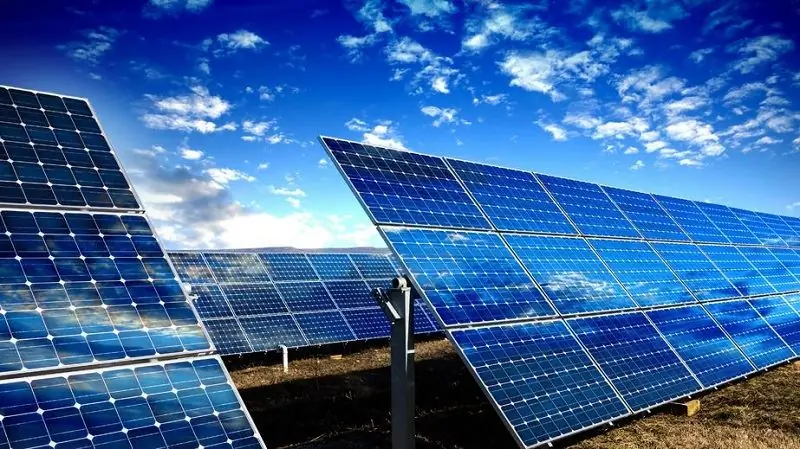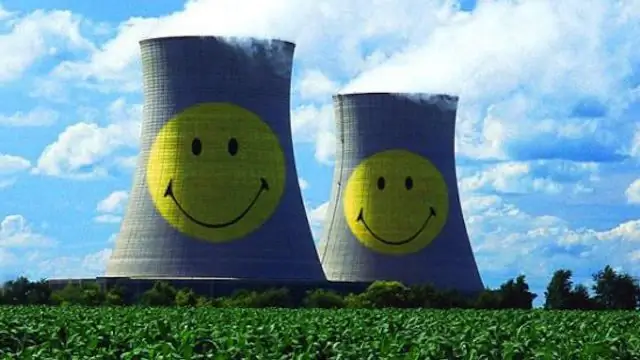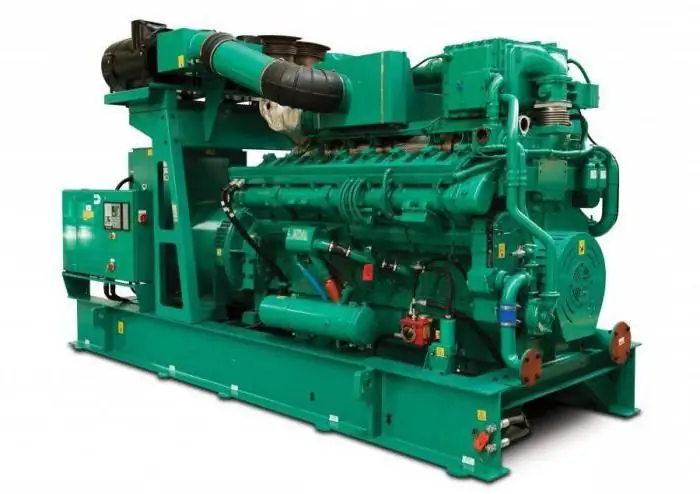2026 Author: Howard Calhoun | [email protected]. Last modified: 2025-01-24 13:10:39
After the annexation of Crimea to Russia, the development of the energy system of the peninsula received not only technical and economic, but also important political significance. For many decades, the Crimean energy sector was largely dependent on supplies from the Ukrainian energy system. Already in 2014, the Russian authorities, realizing the unreliability of these supplies, began to develop an ambitious and complex project, as a result of which the Crimean peninsula should be fully provided with electricity of its own generation.
Status until 2014
In the 1980s, a nuclear power plant was being built in Crimea, which would have covered the energy needs of the peninsula with a large margin. However, there was a terrible disaster in Chernobyl, the construction was suspended, and then completely frozen. After the collapse of the Union, Ukraine had neither the opportunity, nor the desire, nor the need to resume construction.

The young country got Crimea with a very dilapidated energy system. The most "modern" of the still operating power plants was built in 1958. The first years of independence are rememberedfrequent blackouts in Crimea. The construction of power plants operating on expensive fuel during the economic crisis looked extremely unprofitable. In addition, as a legacy from the Union, Ukraine received a powerful energy system with several nuclear power plants, which produced electricity much cheaper than thermal plants.
Therefore, the problem of the energy supply of the peninsula was solved with the help of supplies from the Zaporozhye nuclear power plant. Cheap electricity gradually began to crowd out thermal power plants that consume expensive gas. On the peninsula, the centralized supply of hot water was steadily decreasing. Crimeans were forced to equip their homes with electric water heaters and heaters.
In addition, the Ukrainian authorities set out to develop alternative energy on the peninsula. In the late 90s, the first wind power plants in Crimea appeared, by 2013 their total capacity was 60 MW. Solar power plants with a capacity of about 400 MW were also built at the expense of foreign investors. And thermal power plants fell into decay more and more.

After joining
Since the spring of 2014, all the problems that have accumulated in the energy sector of Crimea have fallen on the shoulders of the Russian Federation. In 2013, the peninsula consumed a total of approximately 6.5 billion kWh, while the Crimean energy system generated about 1.2 billion kWh. The share of electricity supplied from Ukraine reached approximately 82%. Moreover, the unfriendly Ukrainian authorities could at any time stop deliveries, as happened with the supplyfresh water.
It was not possible to quickly increase the generation of one's own energy, the scale of such a task is too large. The Russian government approached the solution of the problem in stages. The first stage is to significantly reduce dependence on Ukraine with the help of an energy bridge across the Kerch Strait. The second stage is the construction of power plants in the Crimea, capable of completely eliminating the energy shortage on the peninsula in a few years.
Blockade
Until the end of autumn 2015, Ukraine fulfilled the terms of the contract, regularly supplying electricity to Crimea. But on November 22, Ukrainian activists, with the tacit consent of the authorities, began to undermine the pylons of electric lines. Soon the power supply to the peninsula was completely cut off. A week later, one power line was restored, but under pressure from nationalists and an aggressive public, the Ukrainian leadership refused to resume power supply and renew the contract with Russia.

Fighting Energy Deficit
Rolling blackouts began in Crimea. To overcome the energy hunger of the peninsula, dozens of mobile high-power gas turbine stations and hundreds of diesel generators were brought from Russia. Crimeans massively bought gasoline generators. But these measures only softened the consequences of the blockade. It became obvious that without an energy bridge and new thermal power plants, Crimea is doomed to live in a severe energy shortage.

A pleasant surprise was presented by the builders of the energy bridge. Well ahead of schedule, theylaunched the first line of the bridge on December 2, and the second - on December 15, 400 MW per day began to flow to the Crimea. However, although to a lesser extent, blackouts continued until May 2016. Total electricity supplies increased to 800-810 MW.
Opening new power plants in Crimea
Despite the fact that the energy system of the Crimea has become much more stable and powerful after connecting it to the power system of Russia, the launch of new thermal power plants near Sevastopol and Simferopol with a capacity of 470 MW each remained a priority. The first stage of these stations was supposed to start operating in September 2017, the second - approximately in March 2018.
But the construction of power plants in the Crimea was strongly hampered by sanctions. Four powerful turbines from Siemens were purchased for the TPP and brought to the peninsula in circumvention of the prohibitions. Litigation, as well as unscrupulous work of some Crimean contractors, forced several times to postpone the deadlines for commissioning power plants.
A significant event took place on October 1, 2018, on this day the first units of two new TPPs were put into operation, and the Saki TPP with a capacity of 90 MW was launched. The second block of the Tavricheskaya power plant near Simferopol began generating energy on December 28, 2018. At the Balaklava power plant near Sevastopol, the second turbine was launched at full capacity on January 16, 2019. Two new thermal power plants in Crimea increased electricity generation on the peninsula by 940 MW.

Prospects
Today the Crimean energy system, having a total capacityapproximately 2160 MW, is able to easily endure the holiday season and the cold winter. But the region is developing rapidly, so experts predict that already in the 2020s, the existing capacities may not be enough. Additional construction of power plants in Crimea looks too expensive.
In addition, Russia has not yet learned how to produce powerful gas turbines necessary for thermal power plants, and it is unlikely that European sanctions will be circumvented again. Therefore, the authorities plan to develop the energy sector of the peninsula in other directions: to reconstruct and improve existing thermal power plants, as well as to build stations that generate energy using the sun, geothermal sources or wind.
Recommended:
Solar energy in Russia: technologies and prospects. Large solar power plants in Russia

For many years, humanity has been concerned about obtaining cheap energy from alternative renewable resources. Wind energy, ocean wave tides, geothermal waters - all this is being considered for additional electricity generation. The most promising renewable source is solar energy. Despite a number of shortcomings in this area, solar energy in Russia is gaining momentum
Nuclear power plants. Nuclear power plants of Ukraine. Nuclear power plants in Russia

Modern energy needs of mankind are growing at a gigantic pace. Its consumption for lighting cities, for industrial and other needs of the national economy is increasing. Accordingly, more and more soot from burning coal and fuel oil is emitted into the atmosphere, and the greenhouse effect increases. In addition, there has been more and more talk in recent years about the introduction of electric vehicles, which will also contribute to the increase in electricity consumption
The largest power plants in Russia: list, types and features. Geothermal power plants in Russia

Russia's power plants are scattered in most cities. Their total capacity is enough to provide energy for the entire country
Gas piston power plant: the principle of operation. Operation and maintenance of gas piston power plants

Gas piston power plant is used as a main or backup source of energy. The device requires access to any type of combustible gas to operate. Many GPES models can additionally generate heat for heating and cold for ventilation systems, warehouses, industrial facilities
Gas turbine power plants. Mobile gas turbine power plant

For the functioning of industrial and economic facilities located at a considerable distance from the centralized power lines, small-scale power generating installations are used. They can operate on various types of fuel. Gas turbine power plants are most widely used due to their high efficiency, ability to generate thermal energy and a number of other features

